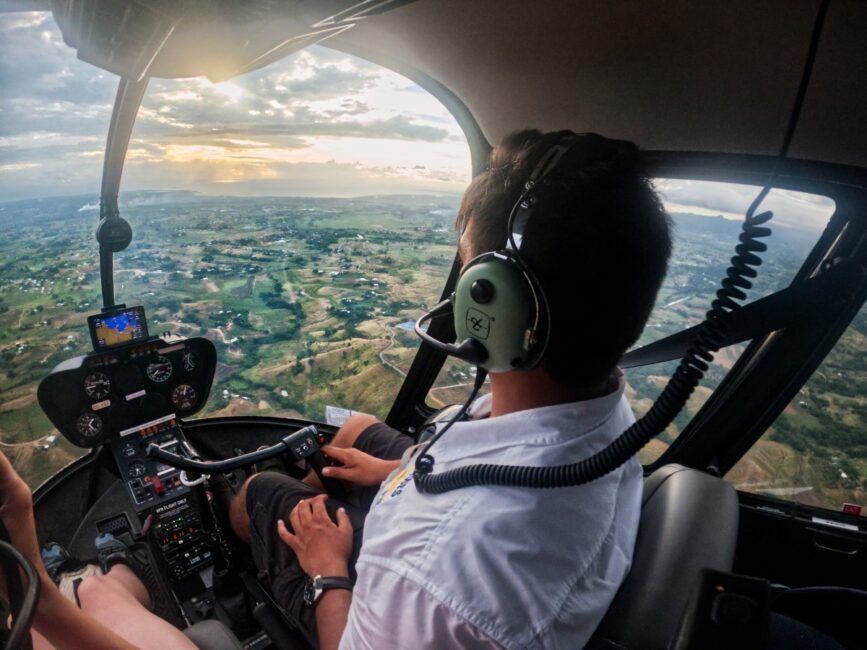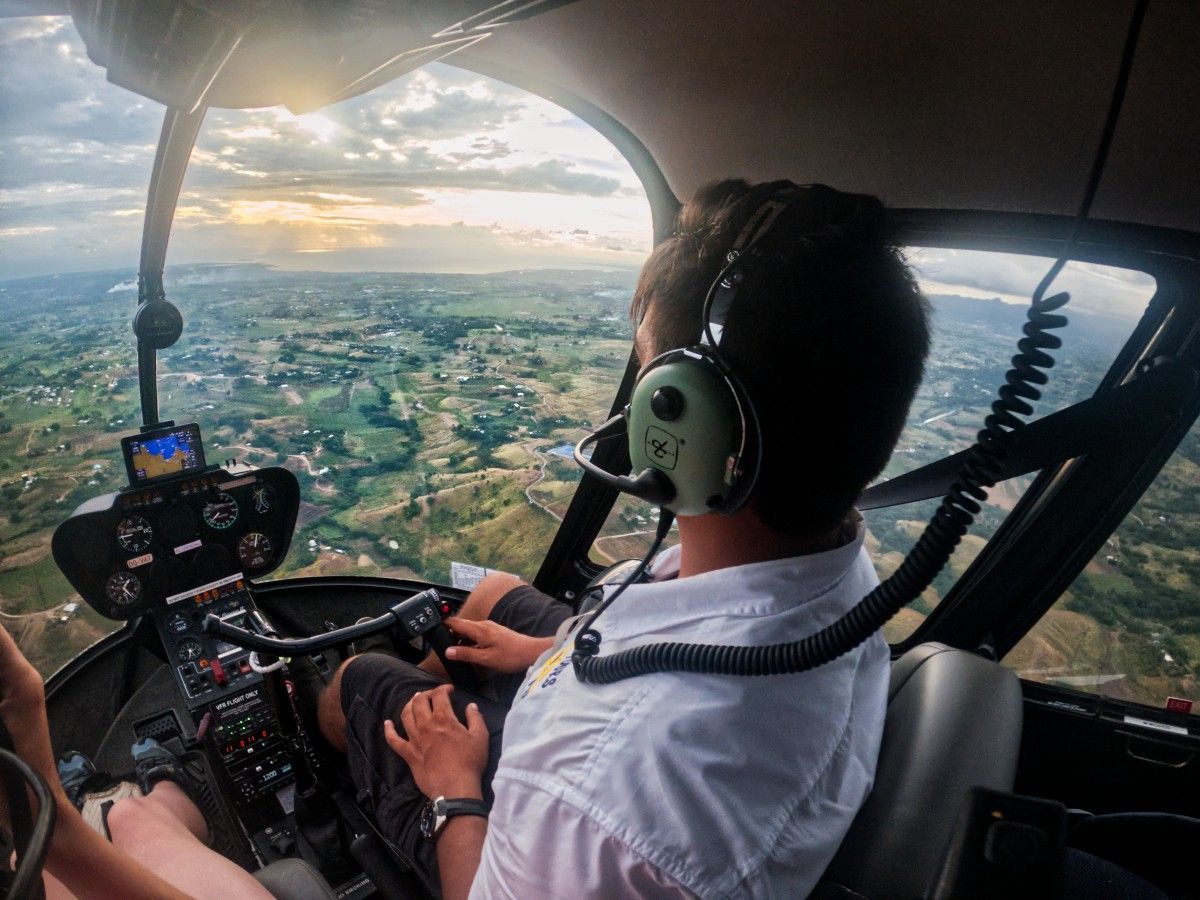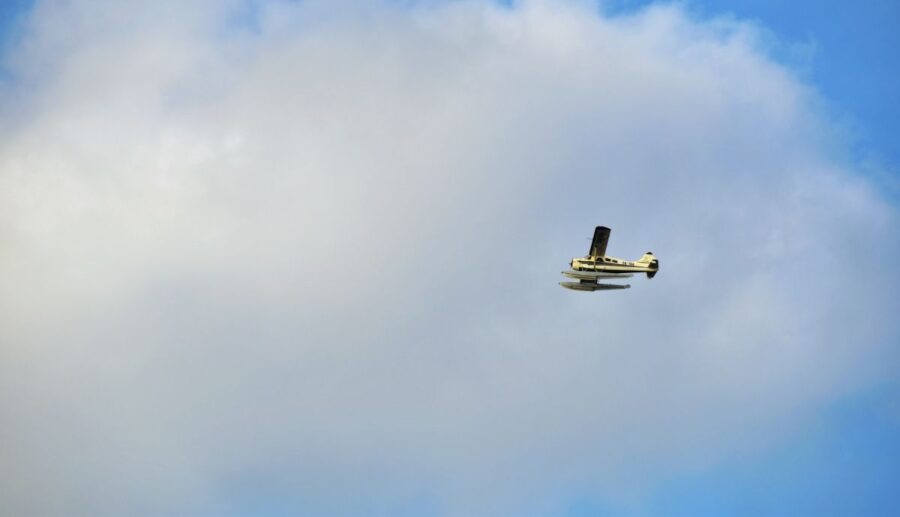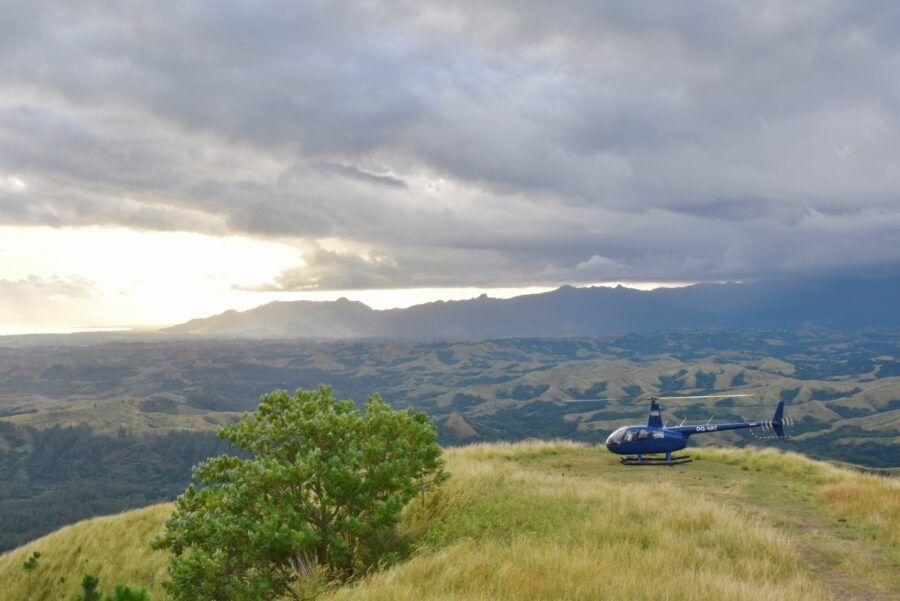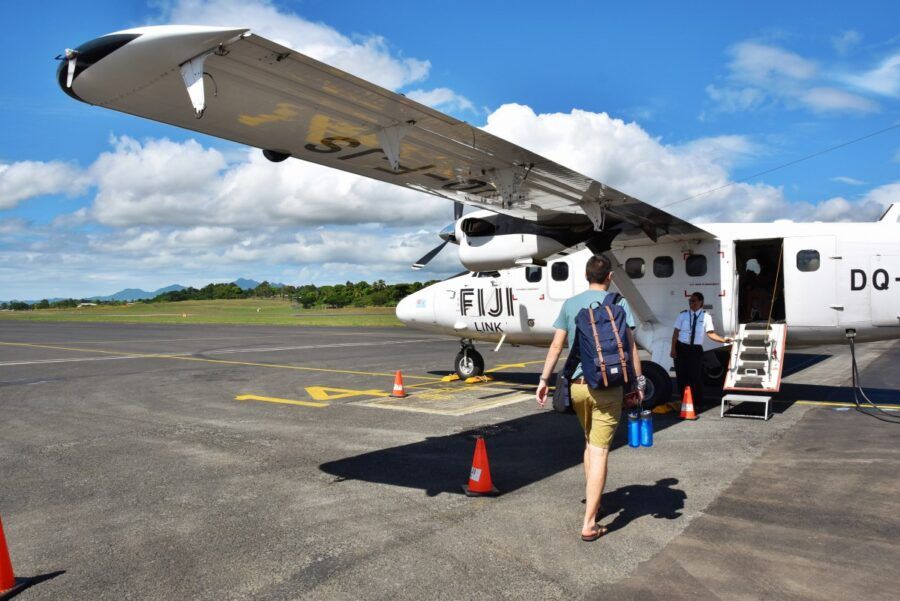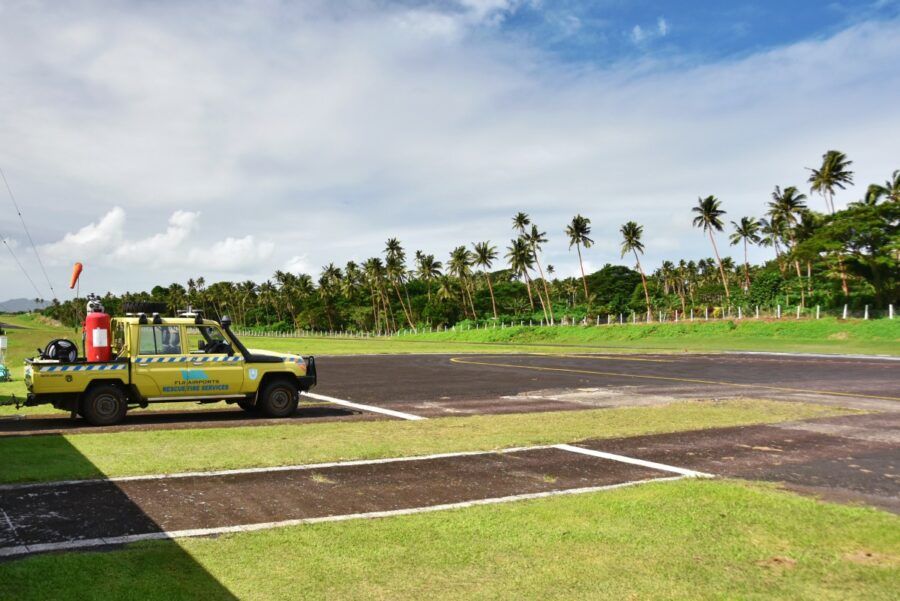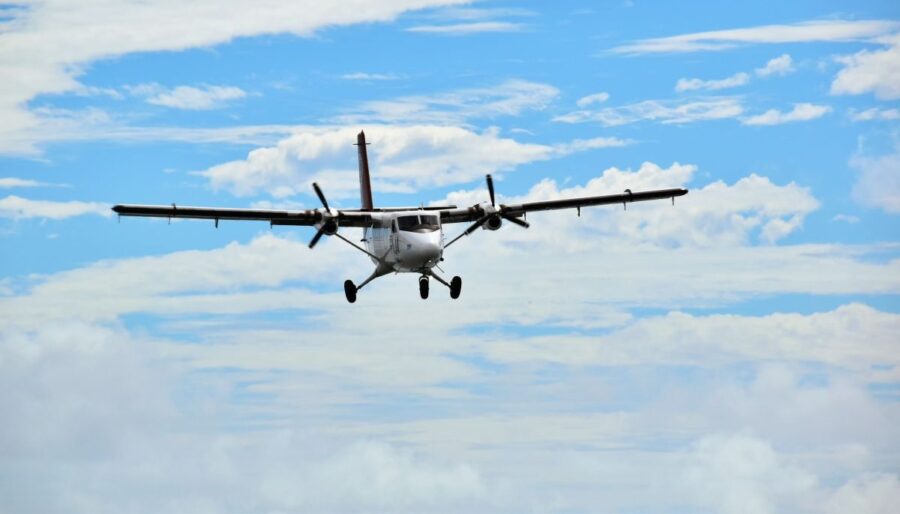Should You Take a Helicopter or a Seaplane for an Island Transfer in Fiji?
Getting to the islands is half the fun of a Fiji getaway. With 333 islands spread across the South Pacific Ocean, some of Fiji’s island resorts are not the easiest to get to. That is, unless you take a helicopter or seaplane island transfer. Enjoy stunning vistas of the glistening waters below as you soar above scattered islands to your resort destination. However, helicopters and seaplanes provide wildly different experiences, as well as restrictions, which are well worth knowing about before you book. Take a look at the pros and cons lists in our Helicopter Vs. Seaplane guide!
For more about flights in Fiji, see our comprehensive Guide to Domestic Flights Around Fiji.
Table of Contents
5 Things to Know About Island Transfers in Fiji
Planning your island-hopping adventure in Fiji just got easier! Here are five essential things to know about island transfers that will help you easily navigate the stunning archipelago (and maybe even save you a pretty penny or two).
- If you have more baggage and equipment than your flight allows, most operators can work with the local ferry companies to transfer your things to you.
- Consider getting travel insurance in case your flight is cancelled (which could happen in bad weather), as your flight operator will be able to provide a letter to your insurer.
- While most flights go between Nadi and the resorts around Fiji, note that inter-island flights are available between the islands in the Mamanucas and the Yasawas.
- Aeroplanes/fixed-wing aircrafts are a cheaper option than helicopters and seaplanes.
- Even if you’re not staying at a resort, certain helicopter operators offer day trips to get a taste of the islands and one of the fabulous resorts for the day.
Now that you’re armed with these insider tips, you’re ready to dive deeper into planning your Fijian island adventure. Let’s explore more about getting around this tropical paradise!
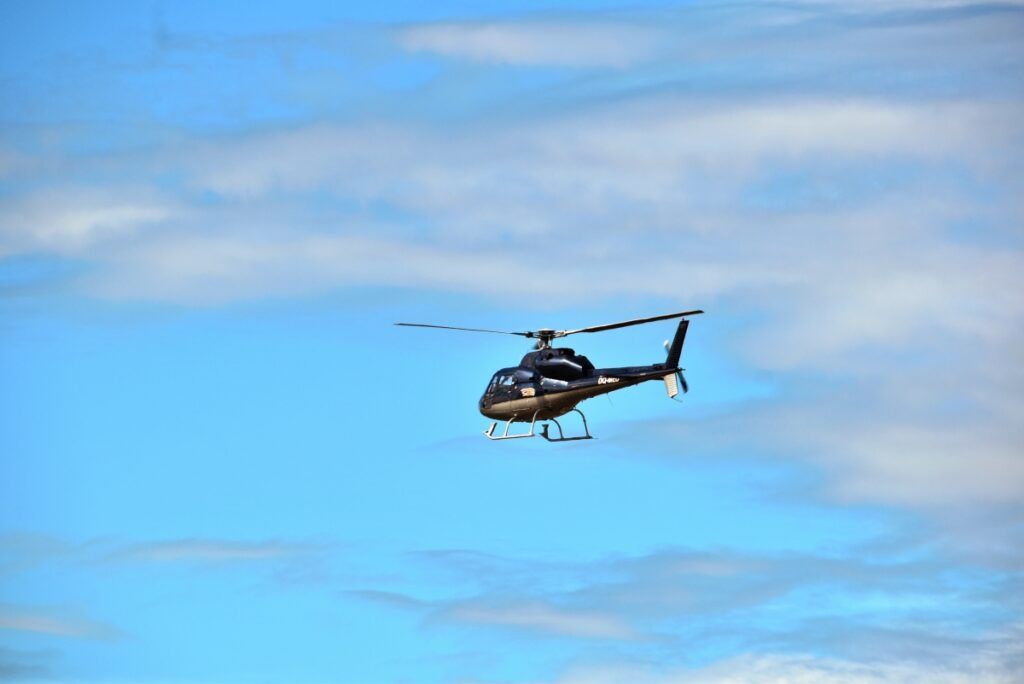 © FijiPocketGuide.com
© FijiPocketGuide.comHelicopter Transfers in Fiji
Take to the skies in a helicopter and fly over the islands of Fiji, landing directly at your resort. Helicopter transfers are extremely popular for getting between Nadi Airport and the Mamanuca Islands, the Yasawa Islands and resorts across Viti Levu. Learn more about the options available in Where to Hire a Helicopter in Fiji.
While flying in a helicopter feels pretty damn awesome, there are some drawbacks. Check out the pros and cons in the list below to make sure that a helicopter transfer is the right option for you.
The Pros of Using a Helicopter Transfer
- Child fares are available at usually half the price of an adult fare for years three to 11, while babies can travel for free if sitting on an adult’s lap.
- Helicopters can take you directly to the resort without getting your feet wet.
- Helicopters offer a wide range of scenic tours and day trips should you just want to explore by helicopter as an activity – see 10 Best Scenic Flights in Fiji for inspiration.
- With a smaller maximum number of passengers, either three, six or eight, helicopters provide a more intimate experience than planes.
- Flying in a helicopter feels epic!
The Cons of Using a Helicopter Transfer
- Very limited baggage allowance – most are 15 kg (33 lb).
- Helicopters are more likely to get cancelled due to bad weather conditions than planes.
- There is often a weight surcharge for passengers who are over 90 kg (198 lb), 100 kg (220 lb) or 123 kg (270 lb), depending on which company you use.
- Helicopters can only take you to nearby island groups – they are not suitable for longer distances.
- Helicopters need a minimum of two passengers in order for the flight to go ahead. If you’re travelling solo, you could be waiting on standby until more passengers are confirmed.
- The small number of passengers that helicopters can hold is not ideal for larger groups.
- Helicopters can’t usually transfer surfboards, fishing gear or scuba diving gear.
For more tips on taking a helicopter, see 10 Things to Know About Taking a Helicopter in Fiji.
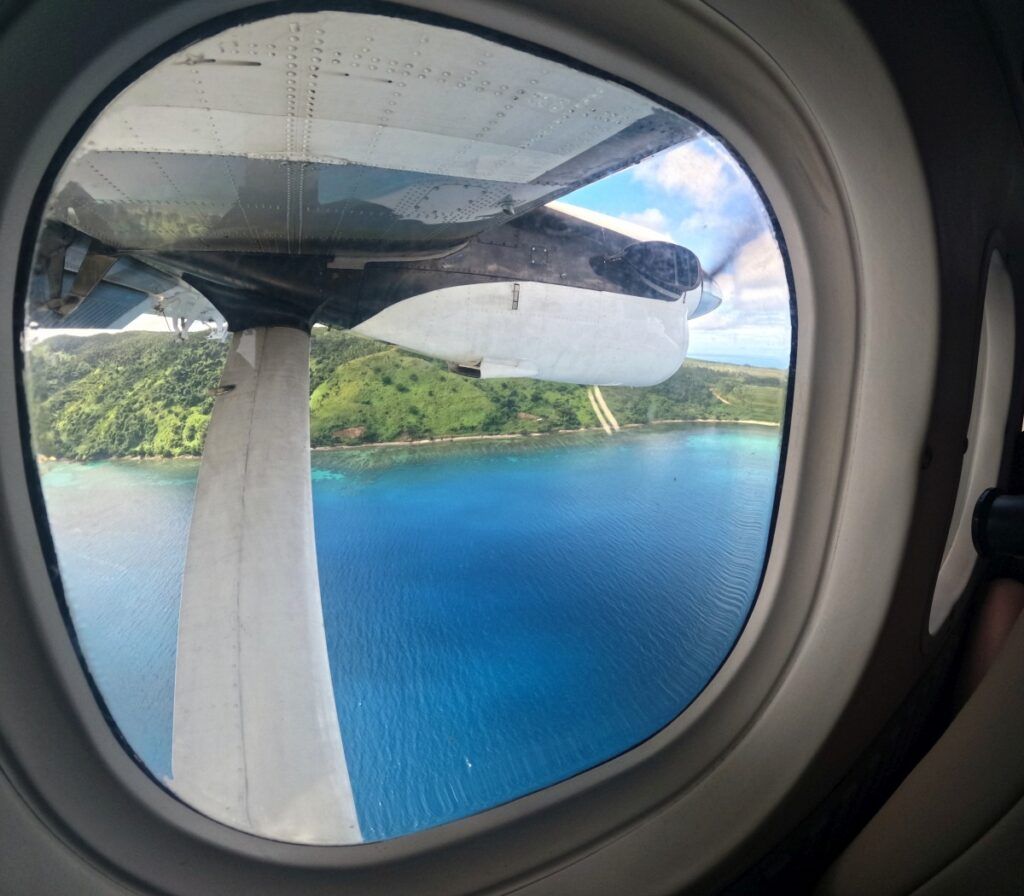 © FijiPocketGuide.com
© FijiPocketGuide.comPlane and Seaplane Transfers in Fiji
Fixed-wing and seaplanes provide another amazing option to get between the islands of Fiji. Seaplanes, in particular, provide a novelty experience of landing on the water right outside of your resort. Travellers also have the benefit of travelling longer distances should they be staying at one of the more remote outer islands. Check out more information in Where to Hire a Plane or Seaplane in Fiji.
With planes only being able to land where there is an airstrip and seaplanes being best suited for active travellers, these methods of island transfers are not for everyone. Take a look at whether planes are the right choice for you by checking out the pros and cons list below.
The Pros of Using a Plane or Seaplane Transfer
- Planes and seaplanes can travel longer distances, giving you the charter experience if you’re travelling as far as Vanua Levu, Kadavu or the Lau Islands.
- They have much larger baggage allowances than helicopters – either 20 kg (44 lb), 23 kg (50 lb) or custom, depending on the weight of the passengers.
- There is usually space for transporting surfboards, fishing gear and scuba diving gear.
The Cons of Using a Plane or Seaplane Transfer
- The offering of seaplane scenic tours is much smaller than what’s available with helicopters. That being said, there are still some great options, which you can check out in The Guide to Taking a Plane Tour in Fiji.
- Planes can only land where there is an airstrip or airport, which limits the number of resorts planes can get to.
- Seaplanes are not suitable for people with mobility problems.
- Planes and seaplanes need a minimum of two passengers in order for the flight to go ahead. If you’re travelling solo, you could be waiting on standby until more passengers are confirmed.
- Seaplanes land on the water, so there will be some paddling or boat transfers involved, which is either a pro or con, depending on who you are.
More About Helicopter Vs. Seaplane for Island Transfers in Fiji
That’s it for our guide to helicopter vs. seaplane for island transfers in Fiji; for more information about scenic flights in Fiji, check out the following articles:
- The Guide to Helicopter Tours in Fiji
- The Ultimate Guide to Fixed-Wing & Seaplane Tours in Fiji
- The Best Helicopter Charters in Fiji: How to Hire a Helicopter
Finally, if there’s anything we’ve missed, you’re likely to find it in The Complete Guide to Domestic Flights in Fiji.
Sources:
The information in this guide has been compiled from our extensive research, travel and experiences across Fiji and the South Pacific, accumulated over more than a decade of numerous visits to each destination. Additional sources for this guide include the following:
- Land Transport Authority (Road safety advice - Updated [2025])
- Tourism Fiji (General travel advice - Updated [2025])
- Fiji Immigration (Visa and immigration advice - Updated [2025])
- Fiji Revenue & Customs Service (Customs and visitor taxes - Updated [2025])
- Biosecurity Authority of Fiji (Biosecurity advice - Updated [2025])
- Fiji Meteorological Service (Weather forecast and warnings - Updated [2025])
- Fiji Bureau of Statistics (Statistics and travel data - Updated [2025])
- Ministry of Tourism and Civil Aviation (Tourism statistics - Updated [2025])
- SPTO (Pacific tourism advice - Updated [2025])
- Fiji Hotel and Tourism Association (Tourism trade association - Updated [2025])
- Safe Travel (New Zealand travel advisory for Fiji - Updated [2025])
- Smart Traveller (Australia travel advisory for Fiji - Updated [2025])
- Travel.State.Gov (U.S. travel advisory for Fiji - Updated [2025])
Our editorial standards: At Fiji Pocket Guide, we uphold strict editorial standards to ensure accurate and quality content.

About The Author
Robin (Ruveni) C.
This article was reviewed and published by Robin, the co-founder of Fiji Pocket Guide. He has lived, worked and travelled across 16 different countries before settling in the South Pacific, so he knows a thing or two about planning the perfect trip in this corner of the world. Robin is also the co-founder of several other South Pacific travel guides and is a regular host of webinars with the South Pacific Tourism Organisation.
